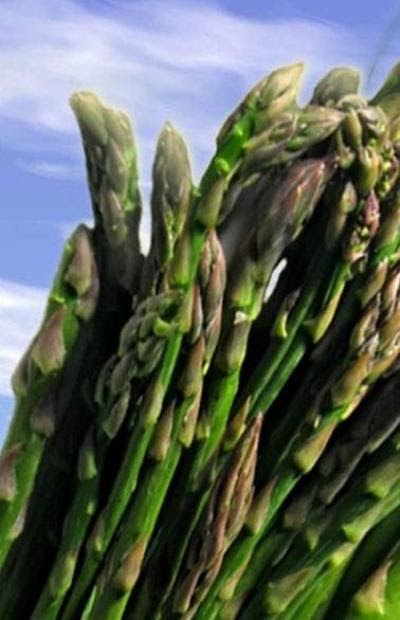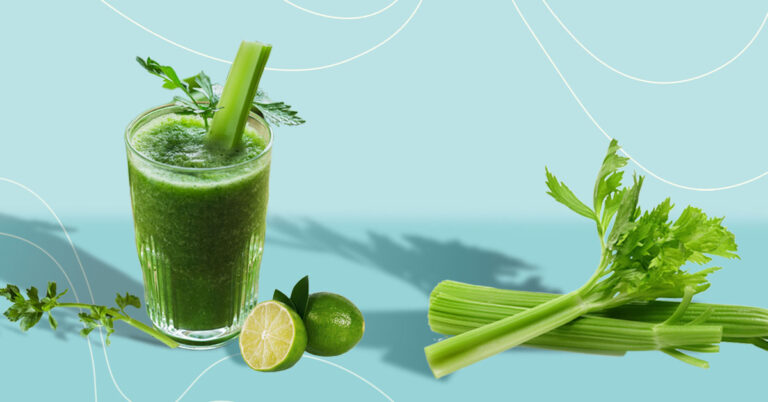The Ancient Medicine: How Asparagus Has Been Used for Centuries to Heal
In the silent, fertile earth, a green spear breaks through, signaling the arrival of spring. Today, we greet it with eager anticipation, a culinary herald of warmer days, gracing our plates as a delicate side, a vibrant addition to risottos, or simply steamed with a whisper of lemon. Yet, to view Asparagus officinalis solely through the lens of gastronomy is to overlook a profound and ancient truth: for millennia, this slender stalk was not merely food, but a potent medicine, a revered healer woven into the very fabric of human health and belief. It is a story stretching back to the dawn of civilization, a testament to humanity’s enduring quest for wellness found in the bounty of the natural world.
Our journey into the healing history of asparagus begins not in a modern kitchen, but in the sun-drenched landscapes of ancient Egypt and Mesopotamia. Here, in the cradles of civilization, the first whispers of its medicinal prowess emerge from the depths of time. Evidence suggests that as early as 3000 BCE, the Egyptians were not only cultivating asparagus but also utilizing it for its therapeutic properties. Hieroglyphs depicting asparagus spears have been found on tomb walls, suggesting its importance, not just as a foodstuff for the living, but perhaps even as an offering or a symbol of vitality for the afterlife. While specific texts detailing its medicinal applications from this era are scarce, the presence of such a labor-intensive crop in early agriculture often points to a value beyond mere sustenance – a value likely encompassing both nutritional and healing attributes.
Moving further into the tapestry of antiquity, we find clearer and more explicit accounts from the classical world of Greece and Rome, where the knowledge of medicinal plants flourished. It was here that asparagus truly solidified its reputation as a formidable natural remedy.
In ancient Greece, the titans of medicine and botany, Hippocrates (c. 460–370 BCE) and Dioscorides (c. 40–90 CE), meticulously documented the properties of asparagus. Hippocrates, often hailed as the "Father of Medicine," advocated for a holistic approach to health, emphasizing diet and natural remedies. While his direct writings on asparagus are not as detailed as those on other herbs, his overarching philosophy would have certainly embraced a plant known for its cleansing and diuretic effects. It was Dioscorides, however, whose monumental five-volume work, De Materia Medica, became the definitive pharmacological text for over 1,500 years, offering an unparalleled insight into ancient pharmacopeias. Within its pages, asparagus is described with a precision that speaks to centuries of observation and practical application. Dioscorides noted its diuretic properties, recommending it for conditions related to the kidneys and bladder, including "strangury" (difficult or painful urination) and "jaundice" (likely related to liver and kidney function). He also mentioned its use for relieving stomach ailments and as a general tonic.
The Romans, ever practical and keen cultivators, embraced asparagus with even greater fervor. Cato the Elder (234–149 BCE), in his treatise De Agri Cultura, provided detailed instructions for growing asparagus, highlighting its economic and dietary importance. But it was Pliny the Elder (23–79 CE), whose encyclopedic Naturalis Historia (Natural History) became a repository of all known Roman knowledge, who truly elaborated on its medicinal uses. Pliny reinforced its reputation as a potent diuretic, recommending it for kidney stones and bladder problems. He also cited its use for stomach pain, to stimulate appetite, and as a laxative. Perhaps most intriguingly, Pliny, like many ancient authors, attributed aphrodisiac qualities to asparagus, a belief that would echo through the centuries. This perception likely stemmed from its distinctive spear-like shape, which, through the ancient "Doctrine of Signatures," often implied a connection to virility and fertility.
Beyond these celebrated figures, countless Roman physicians and herbalists would have incorporated asparagus into their daily practice. Galen (c. 129–216 CE), another pillar of ancient medicine whose theories dominated Western thought for over a millennium, undoubtedly understood and applied its properties within the framework of humoral theory. Within this system, health was maintained by a balance of four humors – blood, yellow bile, black bile, and phlegm – each associated with specific qualities (hot, cold, wet, dry). Asparagus, being cooling and moistening, or perhaps even moderately heating depending on preparation, could be used to correct imbalances, particularly those involving excess heat or dryness, or to flush out excess humors through its diuretic action.
The "Why": Unpacking Ancient Beliefs about Asparagus’s Power
Why did ancient healers place such faith in the humble asparagus spear? Their understanding, while lacking modern biochemical analysis, was rooted in keen observation, empirical evidence, and a philosophical framework that linked the natural world to human health.
-
The Doctrine of Signatures: This ancient belief system held that God or nature had subtly marked plants with clues as to their medicinal purpose. The phallic shape of the asparagus spear, particularly when fresh and firm, was a powerful "signature" pointing to its perceived role in enhancing virility, fertility, and sexual potency. This symbolic association was not trivial; it formed a significant part of its therapeutic reputation. Furthermore, its emergence in spring, symbolizing renewal and vitality, would have reinforced its image as a life-giving, restorative plant.
-
Observed Physiological Effects: The most undeniable and widely acknowledged effect of consuming asparagus, even today, is its potent diuretic action. Ancient people, without understanding the exact biochemical mechanisms, would have readily observed increased urination after eating asparagus. This visible effect would have been interpreted as "cleansing" or "flushing out" the body, removing harmful "humors" or toxins. For conditions like kidney stones or water retention (dropsy), this observable expulsion of fluids would have been direct evidence of its healing power. The distinct odor imparted to urine after asparagus consumption, while sometimes alarming to modern sensibilities, might have been seen by ancient healers as further proof of its active compounds at work, a visible transformation indicating its potency. Its mild laxative effect would also have been noted, contributing to its role in digestive health and detoxification.
-
Humoral Theory Integration: As mentioned with Galen, humoral theory provided the intellectual framework for understanding the body and disease. Asparagus, with its cleansing and diuretic properties, could be employed to rebalance the humors. If a person suffered from an excess of "hot" and "dry" humors, leading to inflammation or fever, the cooling and moistening aspects of asparagus could be beneficial. Conversely, its ability to promote elimination could rid the body of excess "phlegm" or "black bile" believed to cause certain ailments. The exact humoral classification might have varied slightly between regions or individual healers, but its role in restoring balance through elimination was paramount.
Specific Ailments and Ancient Remedies: A Pharmacy in a Spear
The range of conditions for which asparagus was prescribed is remarkably broad, reflecting its versatility in ancient medicine:
-
Kidney and Bladder Health: This was, without a doubt, its primary and most celebrated application. For kidney stones (calculi), painful urination (dysuria), bladder infections, and dropsy (edema or water retention), asparagus was a go-to remedy. Decoctions (strong teas made by boiling the plant material) of the root or spears were common. The belief was that by increasing urine flow, it could help dissolve or flush out stones and clear infections.
-
Digestive System Ailments: Beyond its diuretic effects, asparagus was valued for the gut. It was used as a mild laxative to relieve constipation, and its fiber content, though not understood in modern terms, would have contributed to this. It was also prescribed for stomach upset, indigestion, and to stimulate appetite, particularly in convalescing patients. Some texts even suggest its use against intestinal worms, possibly due to certain compounds or its general cleansing effect.
-
Reproductive Health and Aphrodisiac Properties: The belief in asparagus as an aphrodisiac was deeply entrenched. Its phallic symbolism played a significant role, but also its perceived ability to invigorate and cleanse the body, making it more receptive to passion. It was also used to promote fertility, assist with menstrual issues, and aid postpartum recovery, perhaps due to its nutritional content (vitamins and minerals) and restorative qualities. Wine infusions of asparagus were particularly popular for these purposes.
-
Skin Conditions: The juice or a poultice made from crushed asparagus was applied topically for various skin complaints, including sores, boils, insect bites, and stings. Its perceived anti-inflammatory and cleansing properties would have been the rationale behind such applications.
-
Pain and Inflammation: While not a primary analgesic, asparagus was sometimes included in remedies for joint pain, rheumatism, and headaches. Its general "cleansing" action and potential anti-inflammatory compounds (though unrecognized as such) might have been believed to alleviate these symptoms by removing underlying "toxins" or balancing humors.
-
Fever and General Debility: As a restorative tonic, particularly after illness, asparagus was valued for its ability to replenish the body. Its cooling properties might have made it useful in reducing fevers. Its nutritional density, even if not scientifically analyzed, would have intuitively made it a strengthening food.
Cultivation and Preparation in Antiquity: The Art of the Ancient Apothecary
The effectiveness of asparagus as medicine depended not only on its inherent properties but also on how it was cultivated, harvested, and prepared.
Early cultivation practices focused on selecting robust plants and ensuring fertile soil. The Romans, with their advanced agricultural techniques, developed specific methods for growing asparagus in raised beds, ensuring proper drainage and warmth, which yielded tender, desirable spears. Both wild-harvested and cultivated asparagus would have been used, with cultivated varieties likely prized for their consistency and size.
Preparation methods were diverse, reflecting the ingenuity of ancient healers:
- Raw: While less common for direct medicinal application due to its fibrous nature, fresh spears were sometimes eaten for general health.
- Boiled/Steamed: The most common culinary preparation, also used to create mild decoctions.
- Decoctions: The roots, spears, or seeds were boiled in water for extended periods to extract their soluble compounds. This concentrated liquid would then be consumed as a medicinal "tea."
- Infusions: Less intense than decoctions, infusions involved steeping asparagus parts in hot water, similar to brewing herbal tea.
- Wine/Vinegar Infusions: For enhanced extraction of certain compounds and for preservation, asparagus was often steeped in wine or vinegar. These alcoholic or acidic preparations were potent and readily absorbed. The aphrodisiac qualities were often attributed to these wine-based remedies.
- Powdered: Dried asparagus roots or seeds were ground into a fine powder, which could then be mixed with honey, water, or other ingredients for easy ingestion or incorporated into poultices.
- Poultices: Crushed fresh asparagus, often mixed with other herbs, honey, or flour, was applied directly to the skin for sores, wounds, and inflammation.
- Dietary Inclusion: Beyond specific remedies, regular consumption of asparagus as part of the diet was encouraged for overall health and preventative medicine, much as we recommend incorporating nutrient-rich foods today.
Dosage was often empirical, guided by the patient’s constitution, the severity of the ailment, and the observed effects. Ancient physicians relied on their experience and the wisdom passed down through generations.
The Silk Road and Beyond: Asparagus in Other Traditions
As knowledge spread across continents, so too did the reputation of asparagus. While its primary historical documentation centers around the Mediterranean, its influence rippled outwards.
-
Persian and Arabian Medicine: With the rise of the Islamic Golden Age, ancient Greek and Roman medical texts were meticulously translated and integrated into a new, sophisticated system known as Unani (Greco-Arabic) medicine. Scholars like Avicenna (Ibn Sina, 980–1037 CE), whose Canon of Medicine became a foundational text, incorporated asparagus into their pharmacopeias. Avicenna, like his Greek predecessors, emphasized its diuretic properties and its efficacy in treating kidney and bladder stones. He also detailed its use for jaundice, liver ailments, and as a general tonic, often prescribing it with honey or sugar. The Unani tradition further refined the understanding of its "temperament" (hot/cold, wet/dry) and how it interacted with other remedies.
-
Medieval Europe: During the Middle Ages, as classical knowledge waned in the West, it was preserved and slowly revived in monastic gardens and scholarly centers. Monks cultivated medicinal herbs, and asparagus continued to be listed in herbals and formularies. Figures like Hildegard von Bingen (1098–1179 CE), the German abbess, mystic, and healer, also recognized asparagus’s virtues. While her writings often blended spiritual and empirical observations, she noted its cleansing properties and its benefit for the heart and stomach. Its use continued in folk medicine, particularly for urinary tract issues and as a spring tonic.
-
East Asia (Brief Note): While Asparagus officinalis is native to Europe, North Africa, and Western Asia, other species of Asparagus have long been used in traditional Chinese medicine (TCM) and Ayurvedic medicine in India. For instance, Asparagus cochinchinensis (Tian Men Dong) in TCM and Asparagus racemosus (Shatavari) in Ayurveda are highly revered for their adaptogenic, diuretic, and reproductive health benefits. While distinct species, their shared genus and similar therapeutic applications underscore a global recognition of asparagus-type plants as significant healers. This illustrates a common thread of botanical wisdom, even if the specific plant varied by region.
The Transition to Modernity: From Healer to Delicacy
The Enlightenment and the subsequent scientific revolution gradually shifted the paradigm of medicine. As chemistry and pharmacology advanced, the focus moved from whole plants to isolated active compounds. The complex interplay of plant constituents was often overlooked in favor of single-molecule drugs. Asparagus, while still recognized for its nutritional value, began its slow transition from the apothecary’s shelf to the chef’s pantry.
Yet, its ancient reputation never entirely vanished. Folk medicine continued to champion its diuretic and cleansing properties. Modern science has, in many ways, come full circle, validating many of the ancient claims. We now understand that asparagus is rich in:
- Asparagine: An amino acid that is a potent diuretic.
- Folate (Vitamin B9): Crucial for cell growth and DNA formation.
- Vitamins K, C, E, and A: Essential for various bodily functions.
- Antioxidants: Such as glutathione, quercetin, and kaempferol, which combat oxidative stress.
- Fiber: Beneficial for digestive health.
These compounds explain its observed effects: its diuretic action, its role in detoxification, its potential anti-inflammatory properties, and its overall contribution to vitality and health. The ancients, without the tools of modern biochemistry, intuitively understood the profound impact of this plant.
Conclusion: The Enduring Legacy of the Spear
The story of asparagus is more than just a botanical history; it is a profound narrative about human connection to the natural world. From the fertile crescent to the grand Roman villas, from the illuminated manuscripts of medieval monasteries to the bustling markets of Baghdad, the slender green spear has consistently offered solace, healing, and vitality. It served as a diuretic, a cleanser, an aphrodisiac, and a restorative tonic – a veritable pharmacy in miniature.
Today, as we savor its delicate flavor, perhaps we can pause to remember its storied past. The asparagus on our plate is not just a culinary delight; it is a living link to the wisdom of our ancestors, a testament to their keen observation and their deep reverence for the earth’s healing gifts. It reminds us that long before laboratories and synthetic drugs, humanity found its medicine, its comfort, and its hope, in the simple, yet extraordinary, bounty of nature. The ancient medicine of asparagus endures, a silent, green sentinel of wellness, whispering tales of healing from across the millennia.






